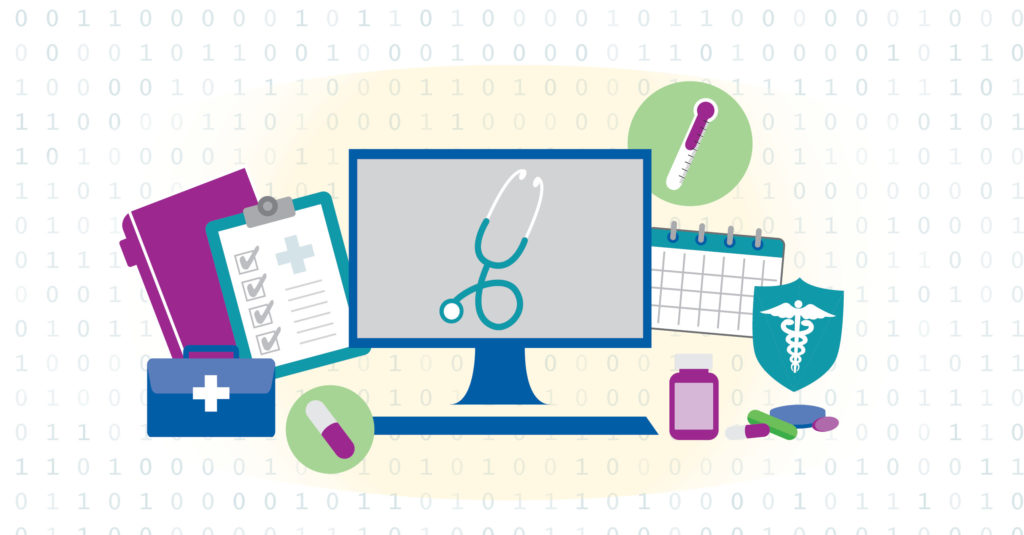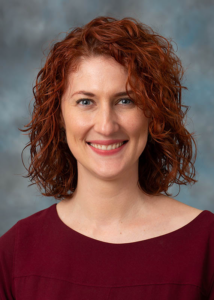Adding Telehealth Solutions to the Autism Toolbox: What Really Works?
Adding Telehealth Solutions to the Autism Toolbox: What Really Works? https://pediatricsnationwide.org/wp-content/uploads/2021/02/More-to-Telehealth_Page-28-1024x535.jpg 1024 535 Katie Brind'Amour, PhD, MS, CHES Katie Brind'Amour, PhD, MS, CHES https://pediatricsnationwide.org/wp-content/uploads/2021/03/Katie-B-portrait.gif- February 06, 2023
- Katie Brind'Amour, PhD, MS, CHES

The COVID-19 pandemic forced autism diagnostics and follow-up care to digital, remote platforms. Now that telehealth is no longer required, what’s worth keeping as a digital service option?
It may be hard to imagine successfully observing a child over video — or even just having responses to prompts relayed over the phone — in order to accurately diagnose autism. Yet when COVID-19 forced many behavioral health programs to close, clinicians faced a critical challenge: find a way to see families effectively using technology, or let them go without care for an indefinite period of time.
“The ADOS [Autism Diagnostic Observation Schedule] is the gold standard for diagnosing autism, and its only telehealth-adapted version was a highly structured set-up that would not have worked with our clinic volume and population,” says Elizabeth Kryszak, PhD, a psychologist and clinician-researcher specializing in autism diagnosis for the psychiatry and behavioral health team at Nationwide Children’s Hospital. Her team performs nearly three dozen autism evaluations each week.
The group decided to embrace telehealth for as much clinical care as possible after shutdowns began, in order to ensure that children who could benefit from early intervention services would not be left unaided due to a delay in diagnosis. Unfortunately, no validated telehealth tools existed at the time.
The team reviewed all of the other diagnostic tools available to see what could easily be applied to remote assessments.
They landed on a prompt-based, parent-facilitated virtual adaptation of the Autism Detection in Early Childhood (ADEC-V), which in its original form did not require significant training for parents to complete the tasks. They initiated validation efforts with 121 children under 4 years of age and published their results in the Journal of Autism and Developmental Disorders. The ADEC-V showed promise as a sensitive (0.82) and fairly specific measure (0.78) that correlated well with other tools for assessing autism symptoms.
While the tool was easy to implement and considered very useful in the vast majority of cases — combined with a host of other diagnostic assessments and thorough medical histories — it wasn’t sufficient to enable a final diagnosis decision for some children.

Elizabeth Kryszak, PhD
“Families vary in terms of their technology literacy and comfort levels, and family environments vary a lot. In some, we just couldn’t get a good observation by telehealth,” Dr. Kryszak explains. “In others, the clinical presentations were more complex or subtle. Sometimes eye contact was difficult to observe, or there were other complicating factors. But for most families, it worked out even better than expected.”
Dr. Kryszak believes that virtual evaluations often remove the anxiety that many children experience in the clinic and allow the clinicians to observe children in their more natural behavioral state. While she feels the ADEC-V works well for young children, the team adapted other measures to create an observation protocol for assessment of older children in the home, which is still being validated.
Internal quality assessments of approximately 1,500 telehealth assessments at Nationwide Children’s found that only in about one in every 10 cases they did not feel comfortable diagnosing via telehealth measures. These families were brought in for follow-up visits before a diagnosis would be decided.
In addition, the team explored the pros and cons of telehealth assessments from clinicians’ point of view. They published their findings from 35 clinician interviews across 17 Autism Care Network sites. The findings collectively suggested that, while it is not ideal for full replacement of all face-to-face assessments, telehealth offers a valuable and often highly acceptable tool for remote assessment and diagnosis.
The themes identified in the clinician interviews mirror many of Dr. Kryszak’s points about the experience of telehealth assessments at Nationwide Children’s: they’re not perfect, they don’t work in every case, but they offer a tremendous benefit for many families with very few downsides.
Post-pandemic, the team opted to keep telehealth evaluations as an option for families with young children who have potential barriers to getting to the clinic for services. They are now working to identify who benefits the most from virtual assessment in order to inform future triage efforts. While many families choose in-person assessments, the field is now much better equipped to confidently adopt validated, telehealth-based evaluations whenever they may be requested or required.
“Virtual assessment isn’t in a vacuum, it’s a valuable part of our larger toolbox for assessments, treatment and other clinical services, and has the potential to increase convenience and access to care for a lot of families,” Dr. Kryszak says. “The whole experience served as a good reminder that we can rely on a wide variety of resources to come to an accurate diagnosis.”
The Nationwide Children’s Hospital behavioral health team offers Project ECHO training sessions for other practices wishing to initiate or expand their autism telehealth services. Contact Elizabeth.Kryszak@nationwidechildrens.org for information on upcoming sessions.
References:
- Kryszak EM, Albright CM, Stephenson KG, Nevill RE, Hedley D, Burns CO, Young RL, Butter EM, Vargo K, Mulick JA. Preliminary validation and feasibility of the Autism Detection in Early Childhood-Virtual (ADEC-V) for autism telehealth evaluations in a hospital setting. Journal of Autism and Developmental Disorders. 2022 Dec;52(12):5139-5149.
- Kryszak EM, Albright CM, Fell LA, Butter EM, Kuhlthau KA. Clinician perspectives on telehealth assessment of autism spectrum disorder during the COVID-19 pandemic. Journal of Autism and Developmental Disorders. 2022 Dec;52(12):5083-5098.
Image credits: Nationwide Children’s
About the author
Katherine (Katie) Brind’Amour is a freelance medical and health science writer based in Pennsylvania. She has written about nearly every therapeutic area for patients, doctors and the general public. Dr. Brind’Amour specializes in health literacy and patient education. She completed her BS and MS degrees in Biology at Arizona State University and her PhD in Health Services Management and Policy at The Ohio State University. She is a Certified Health Education Specialist and is interested in health promotion via health programs and the communication of medical information.
-
Katie Brind'Amour, PhD, MS, CHEShttps://pediatricsnationwide.org/author/katie-brindamour-phd-ms-ches/April 27, 2014
-
Katie Brind'Amour, PhD, MS, CHEShttps://pediatricsnationwide.org/author/katie-brindamour-phd-ms-ches/April 27, 2014
-
Katie Brind'Amour, PhD, MS, CHEShttps://pediatricsnationwide.org/author/katie-brindamour-phd-ms-ches/April 27, 2014
-
Katie Brind'Amour, PhD, MS, CHEShttps://pediatricsnationwide.org/author/katie-brindamour-phd-ms-ches/April 28, 2014
- Posted In:
- Uncategorized







